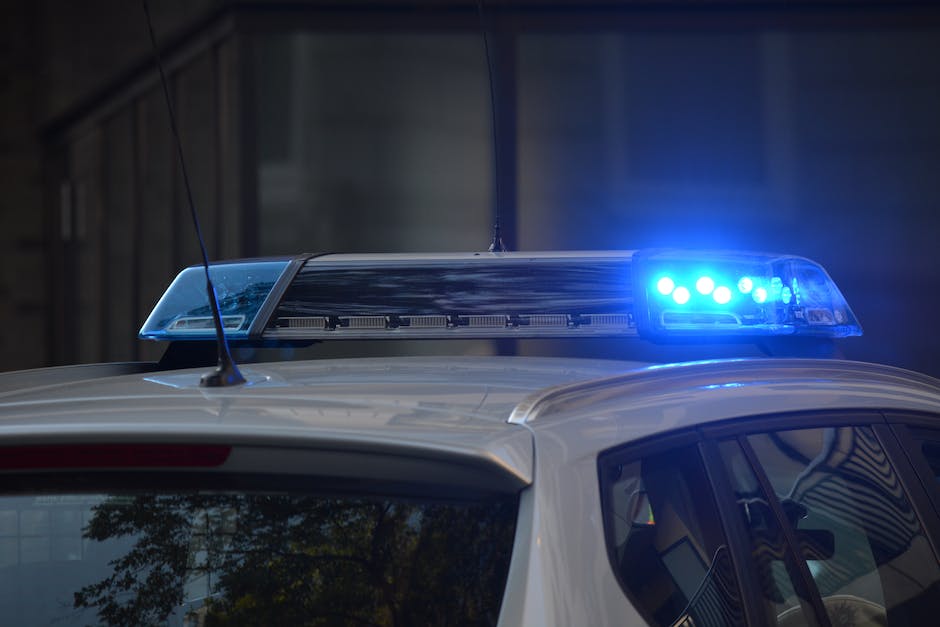Why Should Police Wear Body Cameras

Police officers are increasingly being equipped with body cameras in an effort to improve police accountability and transparency. Wearing body cameras can help protect officers from false accusations, provide evidence for criminal cases, and foster better relationships with the community. This article will discuss why police should wear body cameras and the potential benefits of doing so.The use of body cameras by police officers has been shown to provide numerous benefits. Body cameras provide an objective record of an officer’s interactions, helping to protect officers from false allegations of misconduct and providing a valuable tool for investigation. Studies have also shown that body cameras can help de-escalate potentially dangerous situations and can also reduce police use of force. In addition, body cameras can help increase public trust in the police and provide evidence that can be used in court proceedings.
Advantages of Police Wearing Body Cameras
Body cameras provide an important tool for law enforcement, offering accountability and providing an effective deterrent for officers to follow protocol. The footage can be used to record evidence or investigate complaints, as well as protect officers from false accusations or malicious allegations. Here are some of the advantages of police wearing body cameras:
A major advantage of body cameras is increased transparency and accountability in law enforcement. By recording police activities, citizens can observe how officers are interacting with the public and ensure that they are following proper protocol. It also provides an objective way to review complaints against officers and determine whether misconduct occurred.
Having a record of interactions between police and civilians also helps protect officers from false accusations or malicious allegations. With video footage, it’s easier to see what happened in a given situation and determine if any wrongdoing occurred. This helps protect both the officer’s job security and integrity while also ensuring that any potential misconduct is addressed swiftly and appropriately.
Body cameras can also serve as a deterrent for officers who may be tempted to use excessive force or act inappropriately during interactions with civilians. Knowing that their actions are being recorded can help keep them in check when it comes to following protocol or engaging in potentially inappropriate behavior. This can help reduce instances of misconduct while simultaneously increasing public trust in law enforcement agencies.
In conclusion, body cameras offer numerous advantages for both law enforcement agencies and citizens alike. They provide greater transparency, accountability, and protection for both parties involved while also serving as an effective deterrent against misconduct or improper behavior by officers on duty.
Increased Transparency for Police Force
The increased transparency of the police force is a critical issue that needs to be addressed. The public needs to have confidence that their law enforcement officers are performing their duties in a professional manner and that any complaints against them will be taken seriously. Increased transparency allows for better oversight of the police and promotes accountability. It also enables citizens to make more informed decisions when interacting with law enforcement officers.
There are several ways in which increased transparency can be achieved. One way is through the implementation of body-worn cameras on police officers. These cameras would provide an unbiased account of a police officer’s interactions with the public, which can help in resolving disputes and documenting evidence. Another way is by making complaint forms available online and allowing members of the community to submit complaints anonymously. This will enable citizens to report any issues they may have without fear of retribution or harassment from police officers or other members of law enforcement.
The implementation of measures such as these will help build trust between law enforcement and the public, as well as improve communication between them. It will also create a more secure environment for officers, as they will no longer need to worry about false accusations from the public or being held accountable for any potential misconduct. Increased transparency is essential in ensuring that justice is served fairly and effectively, and this can only be achieved by making sure that both law enforcement and citizens are held accountable for their actions.
Finally, increased transparency helps to create an environment where all individuals have equal access to justice regardless of their background or financial status. By having greater oversight over police activity, people from all walks of life can feel confident that they are being treated fairly when interacting with law enforcement officers, which is often not the case in many parts of society. Increased transparency helps create a safer and more equitable environment for everyone involved, which is why it should be taken seriously by all stakeholders involved in policing activities.
Increased Transparency
Increased transparency is an important step in ensuring that law enforcement is held accountable for its actions. Increased transparency allows the public to know what law enforcement is doing and how they are doing it. It also allows for greater oversight of law enforcement activities and can help to identify potential problems before they become major issues. By making police records and practices more accessible to the public, it can help to ensure that the law is being followed and that proper procedures are being followed. This can lead to improved trust between law enforcement and the community, as well as a better understanding of how police officers interact with citizens on a daily basis.
Better Training
Improved training for police officers can help to ensure that they are better equipped to handle difficult situations and act in accordance with the law. Providing better training will also help officers understand the needs of their community better, allowing them to respond appropriately and effectively when called upon. This could include more comprehensive training on de-escalation techniques or understanding cultural differences, both of which could result in fewer instances of excessive force or wrongful arrests. Improved training will also help officers stay up-to-date on changing laws, technologies, tactics, and other developments in policing.
Better Use of Technology
Technology can be used as a tool for improving accountability in law enforcement. For example, body cameras have been found to reduce incidents of excessive force and wrongful arrests by providing visual evidence of interactions between police officers and citizens. Additionally, dash cams can be used to monitor patrol routes or provide evidence during investigations into potential misconduct by officers. These technological tools can provide greater transparency into police activities and provide an invaluable record for holding officers accountable.
Increased Community Engagement
Engaging with the community is an important part of ensuring accountability for law enforcement. This includes engaging with community members at regular meetings or holding forums where people can voice their concerns about local policing practices. It also includes actively engaging in dialogue with members of minority or marginalized communities who may feel intimidated by police presence or mistrustful of their intentions. By listening to these voices, it can provide valuable insight into how policing practices may need to be adjusted in order to better serve all members of a community.
Overall, increasing transparency, providing better training for officers, making better use of technology, and engaging with the community are all steps that can be taken towards improving accountability for law enforcement activities. By taking these steps towards increased transparency and improved relations between law enforcement and citizens alike, it will lead to a stronger sense of trust between the two parties that will ultimately benefit everyone involved.
Reduce Use of Force by Police Officers
The use of force by police officers is a highly contentious issue in many countries, and the way it is used has come under intense scrutiny in recent years. It is important to note that there are times when the use of force may be necessary, such as when an officer needs to protect themselves or others from harm. However, there are also many instances where the use of force can be avoided, and it is important for police officers to understand when this is the case.
In order to reduce the amount of force used by police officers, it is important to ensure that they are properly trained in how to handle situations appropriately. This includes training on de-escalation tactics which can be used to defuse a situation without having to resort to violence. It is also important for police officers to understand the laws surrounding their use of force, and what constitutes excessive force. This knowledge can help them make better decisions in difficult situations.
It is also important for departments to have clear policies on the use of force and consequences for officers who do not adhere to these policies. These policies should be updated regularly so that officers understand what they are expected to do in any given situation. Having regular reviews and checks on how these policies are being implemented can help ensure that they are effective and that all officers understand them clearly.
The implementation of body worn cameras has also been found to be effective in helping reduce the amount of force used by police officers, as it provides evidence if there are any disputes over what happened during an incident. Officers should be trained on how best to utilize body worn cameras so that they can utilize them effectively in their work.
Ultimately, reducing the amount of force used by police officers requires a concerted effort from both law enforcement agencies and members of the public alike. By ensuring that all parties involved understand their rights and responsibilities when dealing with law enforcement, it will help create a safer environment for everyone involved.

Decreased Number of Complaints Against Police Officers
The number of complaints made against police officers has been decreasing steadily in recent years. This is a positive step towards improving the relationship between law enforcement and the public. By reducing the number of complaints, police departments can focus their resources on more important issues, such as preventing crime and protecting the public.
Law enforcement agencies have implemented several measures to reduce the number of complaints against police officers. One of these measures is increasing transparency and accountability in policing. This includes training officers on how to interact with members of the public, creating a system for reporting misconduct, and improving oversight of police departments. Additionally, many departments have created civilian review boards which provide an independent review of complaints made against police officers.
Furthermore, law enforcement agencies have been engaging in more community outreach programs. These programs are designed to strengthen relationships between police officers and citizens by providing educational programming, recreational activities, and other forms of community engagement. By building trust and understanding between law enforcement and citizens, there is less likelihood that a complaint will be filed against a police officer.
While there is still room for improvement when it comes to reducing the number of complaints against police officers, it is encouraging to see that many law enforcement agencies are taking steps to address this issue. With continued efforts towards transparency and accountability in policing, as well as increased community outreach initiatives, we can expect to see further decreases in the number of complaints made against police officers in the future.
Improving Relations Between Law Enforcement and Community Members
Improving the relationship between law enforcement and community members is essential to ensure public safety. This can be accomplished by both parties working together to create an atmosphere of trust and understanding. Law enforcement agencies must strive to be open and transparent in their operations, while also taking steps to ensure they are respecting the rights of those they serve. Community members should also understand the role of law enforcement in their neighborhoods and work with them to create a safe environment for everyone.
For law enforcement, this means taking steps to build trust with community members by being open about their operations, responding quickly and appropriately to incidents, and showing respect for all individuals. Agencies should also make sure they are up-to-date on new technologies that could help them better serve their communities, as well as implementing policies that promote diversity and inclusion.
Community members should strive to understand the role of law enforcement in their neighborhood, as well as how it affects them directly. This means being willing to engage with officers in a respectful manner when needed, providing tips or information that could lead to an arrest or assist in solving a crime when possible, and speaking up if they feel like something is wrong or unfair. It is also important for community members to remember that officers are just doing their jobs and deserve respect for it.
Creating an atmosphere of trust between law enforcement agencies and community members can help ensure public safety while also improving relations between the two groups. To do this, both sides need to work together and show mutual respect for one another’s roles. Law enforcement agencies must strive for transparency in their operations while understanding the rights of those they serve, while community members should strive to understand the role of law enforcement and how it affects them directly while engaging respectfully with officers when necessary. With both sides working together towards these goals, relationships between law enforcement agencies and community members can be improved significantly.
Increased Efficiency in Courtroom Proceedings
The court system in the United States is a complex and often inefficient one. With the ever-increasing caseloads, backlogs, and delays, it is clear that the current process is outdated and in need of an overhaul. One way to increase efficiency in the courtroom is to implement modern technology to help streamline the proceedings. By utilizing technology such as digital document management systems, virtual courtrooms, and e-filing systems, courts can reduce delays and paperwork associated with traditional court proceedings.
Digital document management systems allow attorneys and judges to access all relevant documents quickly and efficiently without having to manually search through paper files. This not only reduces time spent on document retrieval but also ensures that any documents are up-to-date and accurate. Additionally, digital document management systems can help reduce the amount of time spent on cross-referencing documents or searching for missing documents during a trial.
Virtual courtrooms allow attorneys to present their cases remotely from any location with internet access, eliminating the need for attorneys to travel long distances for appearances. This not only saves time but also reduces costs associated with travel expenses. E-filing systems can be used by attorneys to easily file all motions electronically without having to print out multiple copies of each motion. This eliminates delays associated with mailing or hand delivering papers and allows courts to quickly review motions before a hearing takes place.
Overall, implementing modern technologies into courtroom proceedings has the potential to significantly increase efficiency in courts across the country. By reducing paperwork, eliminating unnecessary delays, and allowing attorneys to present their cases remotely, these technologies can help reduce caseloads while ensuring that court proceedings are conducted in an efficient manner.

Conclusion
The use of body cameras should be considered as an important tool for law enforcement to reduce risk, improve accountability, and increase both officer and public safety. Body cameras can also provide evidence that can be used in criminal proceedings. The potential for body cameras to improve the trust between police officers and the communities they serve is significant.
Body cameras can provide an extra layer of transparency and accountability that will help both police officers and civilians alike. While there are challenges to implementing a body camera program, such as cost, storage space, privacy issues and the need for better technology, these issues are manageable with the right policies and regulations in place.
The use of body cameras has already had a positive impact on police-citizen relations in many areas of the country, and their potential benefits are clear. Widespread adoption of body cameras by law enforcement agencies is a necessary step toward improving community relationships with law enforcement personnel.
In conclusion, there is considerable evidence supporting the use of body cameras by law enforcement agencies. Their ability to reduce risk, improve accountability, increase officer safety and help build trust between police officers and their communities make them an indispensable tool for modern policing.
